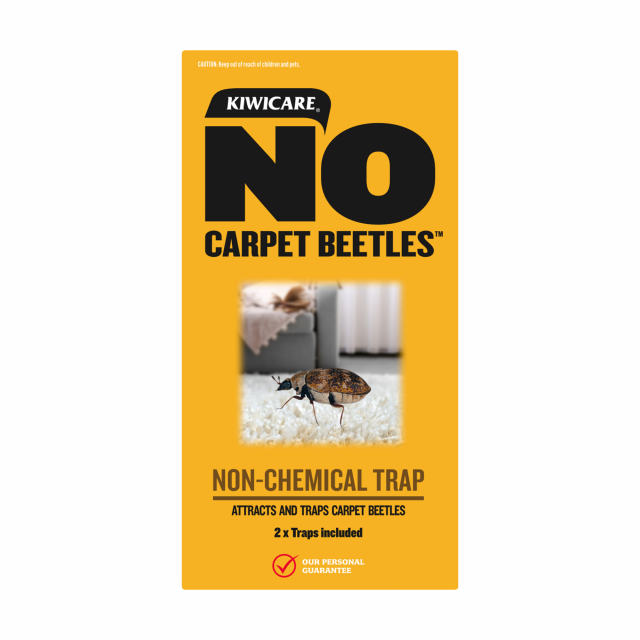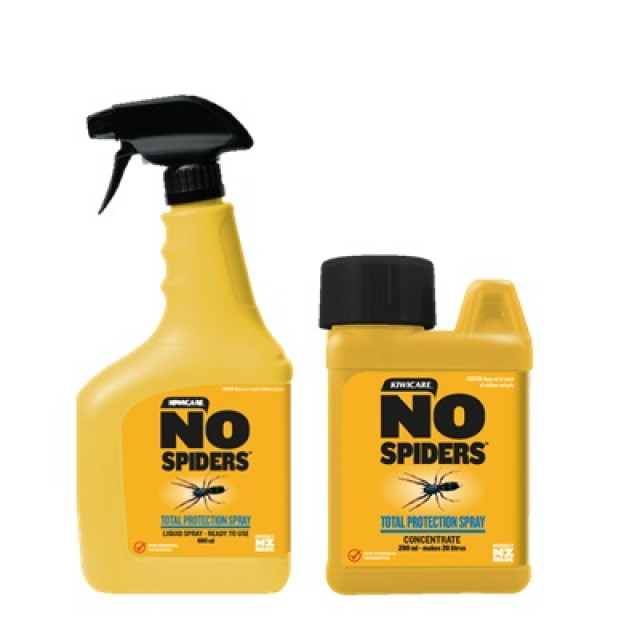Solve problems in and around your home.
Start Problem Solver

Carpet beetle larvae, known as woolly bears, destroy wool carpet and other natural fibres.
The Black Carpet Beetle, the Australian Carpet Beetle, the Common Carpet Beetle, the Varied Carpet Beetle (shown), the Furniture Carpet Beetle and a close cousin, the Fur Beetle, have all been introduced to New Zealand and are frequently found devouring the woollens and carpets of New Zealand homes.
Larvae are likely to be underneath the carpet where they chew through the fibres leaving the upper fibres to come loose.
The carpet beetle larva (grubs often called woolly bears) and several other insect larvae such as hide beetle, larder beetle, clothes moth and case moth, destroy carpet and other natural fibrous material. Carpet beetle, larder beetle and hide beetle are members of a group known as the dermestid beetles and are pests of considerable economic importance throughout the world by damaging a wide variety of stored products.
While the clothes moth, carpet beetle and hide beetle larvae eat natural fibres such as wool, the case moth larvae use the fibres of natural or synthetic material to encase themselves in a protective tube of fibres.
Case moth larvae are often not recognised as being alive. They look like small rolled pieces of carpet but you may be able to see the brown head of the larva sticking out one end. The adults are small brown moths that often congregate in the upper corners of rooms.
To get rid of carpet beetle follow these simple steps:
The use of NO Bugs Super Bug Bomb or NO Bugs Super Fumigator fumigators can help get rid of carpet beetle used in conjunction with the sprays.
Look Out For
Have you seen your carpet becoming thread bare around the edges? Are fibres of your carpet falling out? If yes, this may indicate that the larvae of carpet beetle, clothes moth or case moth larvae are under the carpet chewing through the fibres.
Are you finding strange little cylinders of fibres around the edge of the carpet, often with a dark brown tip at one end? If so, you may have case moth larvae chewing your carpet. These cylinders are the larvae themselves wrapped in carpet fibre, the brown tip is the head of the larva.
Have you found unexplained holes in your favourite woollen sweater? This may indicate an infestation of clothes moth or one of its relatives.
Carpet beetle are members of the dermestid beetles. Other dermestid beetles also feed on natural materials. For example the fur beetle larvae feeds on furs and leathers. Other dermestids such as leather and hide are scavengers of carcases. Larder beetles feed on dry goods often found in larders and kitchens.

Non-toxic traps to attract and trap carpet beetles and clothes moth. Monitor and protect carpet from damage by c…

For long lasting control of 99.9% of common insect pests.

Effective, long term indoor and outdoor protection from spiders and crawling insects.